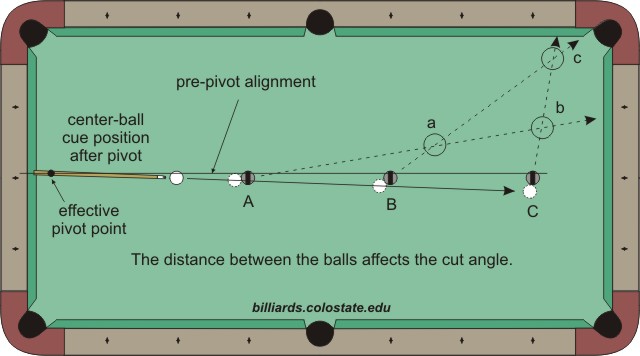Cornerman said:
Well, sure, not only can we go back to the discussion, but we can also discuss the meaning of 'reading.' You just posted praise to JoeW on his post, and hope that everyone "reads it." I have to ask: did you read it???
Yes; and I thought it was quite good, in all respects.
Cornerman said:
His post not only said the same thing that JoeyA and I wrote in this same thread (and others. Sorry, I didn't read everything. I skimmed), but it points out the very problem that some of us have with, say, your articles that may imply the attempt to disprove these systems as well as many of your posts on these aiming systems of the same language. Surely, you "read" that from Joe's post.
The purpose of my articles was not to disprove any particular system. The purpose was to debunk the sometimes-outrageous statements we often here about some of the systems. Another purpose was to provide some additional illustrations for discussion.
The "systems" obviously work for many people, because we have read numerous testimonials. To me and many others, we want to understand why the systems work for these people. The articles, illustrations, animations, and videos we have seen lately show that for the systems to work for a wide range of shots, "adjustments" are required. For Spidey, the "adjustment" is a slight shift in the bridge during the pivot. For others, the adjustment might be in where they place their bridge hand during the initial alignment step. For others, it might be where they place their head during the alignment or pivot step. I don't know how the systems work for everybody that uses them successfully; but I and others truly want to know, as evidenced by much of the participation in this thread. If we can figure out and explain/illustrate/demonstrate exactly how the systems work, then the systems might be more useful to even more people and we won't need to have threads like this any more.
For some people, it is enough to say: the system works if you have faith and trust in the system, if you visit and work with an instructor who really knows the system, and if you practice a lot. For other people (e.g., me), we want to know what various people are actually doing during the alignment and pivot steps to create the required lines of aim for a wide range of shots. All I want is a more complete and realistic description of how the systems work, because they don't always work as advertised (e.g., "Just pivot and the ball goes in the hole, regardless of the distance between the balls, regardless of your bridge length, and regardless of the angle to the pocket"). The diagrams in my articles show how angle to the pocket, ball distance, and bridge length (and/or effective pivot length) are important. If the system proponents don't explain how these effects are accounted for in their systems, then I think the descriptions of the systems are incomplete. To explain or illustrate "how a system works" we need to know what people are actually doing to make the system work. I think I know what Spidey does, but I'm not sure what other people do.
Cornerman said:
And even though JoeW says that you've already said that no one particular system is or was under attack, it is still a general belief and understanding that your writings do indeed mean to attempt to disprove these systems in general. So, please, read Joe's post again. For all of our sakes. But, remember that his statements aren't new. Surely you've read them before.
I doubt that anything in this thread or my articles is really new, but it does seem that we are making more progress in the discussion than we have in the past. I think it helps when people like JoeW step back and try to bring all sides of the various arguments together in a fair and respectful manner.
Respectfully,
Dave

